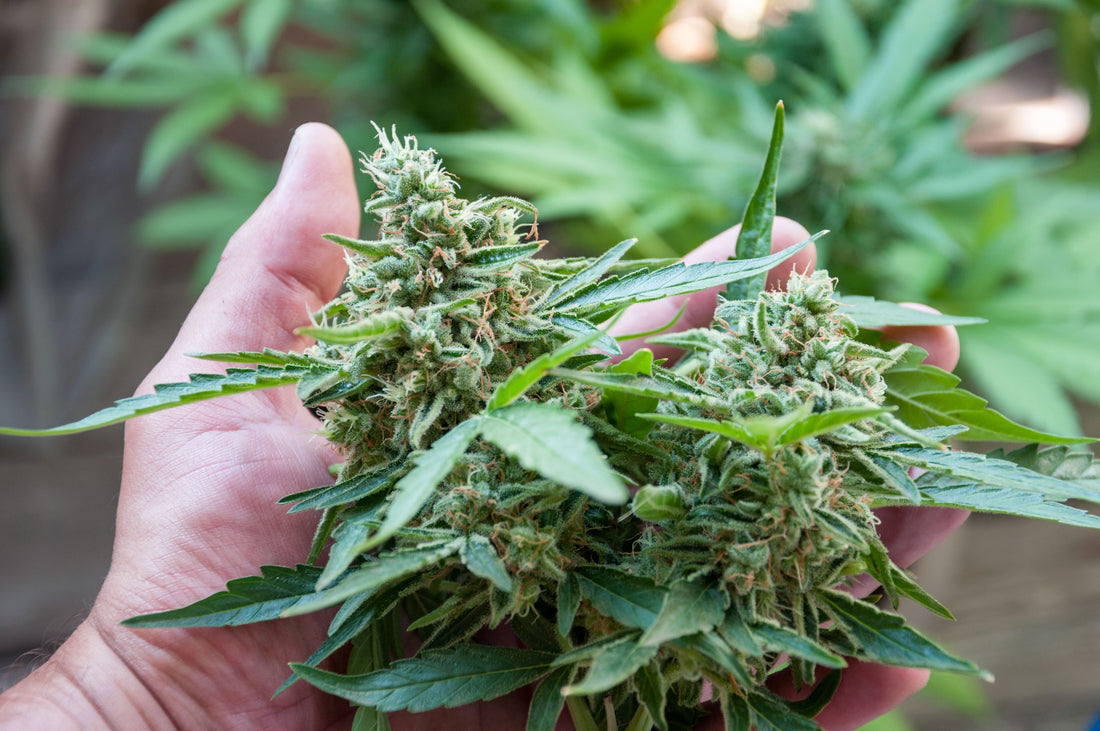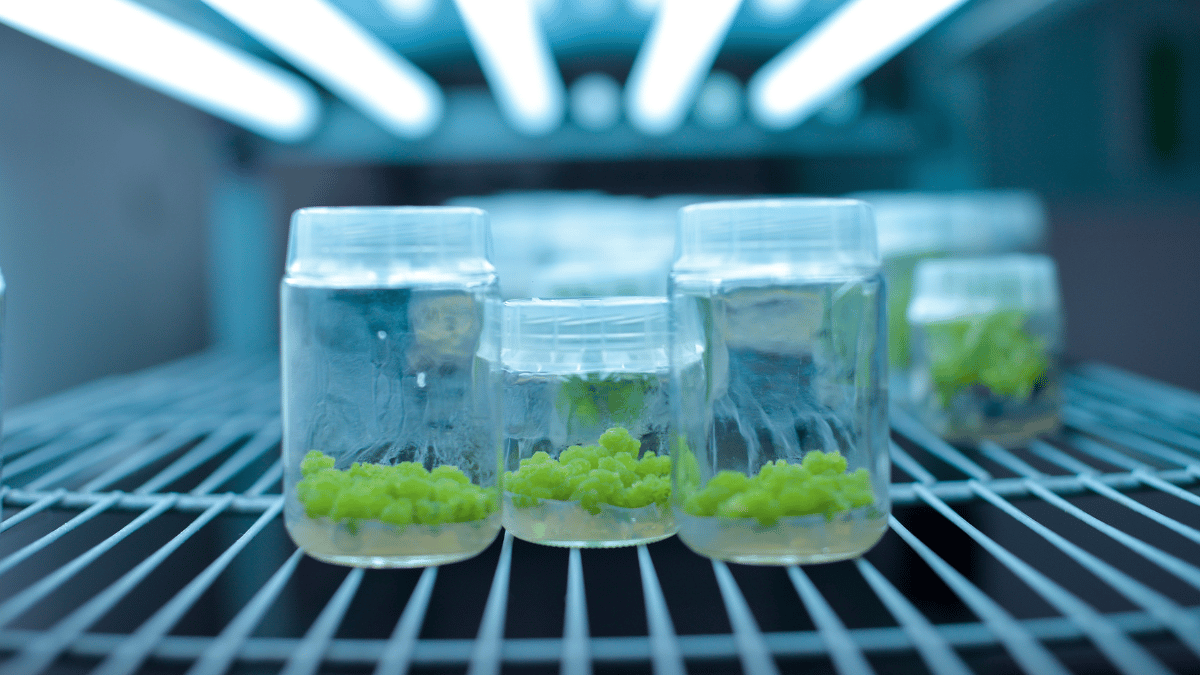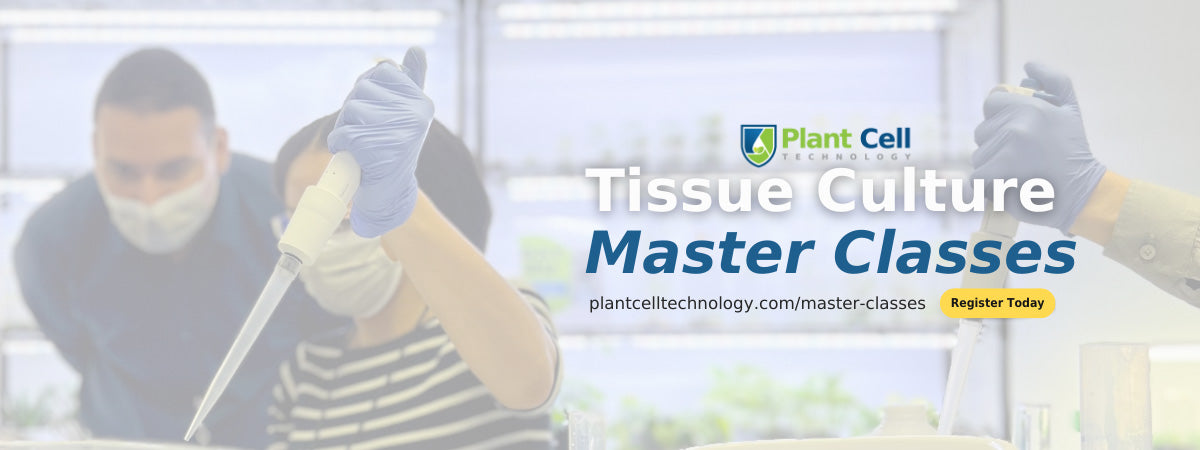
Types of Cannabis Propagation Methods
As a content and community manager, I leverage my expertise in plant biotechnology, passion for tissue culture, and writing skills to create compelling articles, simplifying intricate scientific concepts, and address your inquiries. As a dedicated science communicator, I strive to spark curiosity and foster a love for science in my audience.


In the past, seeds and vegetative cuttings have been used to propagate Cannabis. To induce germination, the seeds are kept in moist aerated soil and a photoperiod of cool fluorescent light is provided for its establishment.
Introduction
The tissue culture industry has boomed over the past few years because of its extensive benefits and potential roles in research studies, horticulture, and drug industries.
Cannabis, which is also called hemp, has been picked up by several pharmaceutical industries because of the secondary metabolites in the plant, which can be used as drugs. However, cultivation of the plant is highly regulated in all countries and controlled by government policies and laws.
In some countries like the U.S., the legality of culturing Cannabis is based on one particular criterion that differentiates hemp from marijuana. According to the law, when the concentration of the tetrahydrocannabinol (THC) - a toxic secondary compound in the plant - is less than or equal to 0.3%, it will be considered hemp. When the concentration of THC rises above 0.3 % in the plant, it will be called marijuana. In the latter case, the culturing will be considered illegal and will be controlled and regulated by the law.
In this article, you will learn about the strategies used for Cannabis sativa propagation and the advantages and disadvantages of using tissue culture for Cannabis propagation.
Strategies for the Propagation of Cannabis Sativa
1. Conventional Propagation
In the past, seeds and vegetative cuttings have been used to propagate Cannabis. To induce germination, the seeds are kept in moist aerated soil and a photoperiod of cool fluorescent light is provided for its establishment. The germination of the plant from seeds takes an average of 4-6 days.
However, there are some disadvantages of Cannabis propagation from seeds:
- Genetic instability of seeds will be reflected in the characteristics of plants.
- 50% chance of getting male plants if feminized seeds are not used.
- Longer duration of time is required for the ripening of plants.
- There is a possibility that some seeds won’t germinate.
Other parts used to propagate plants include nodal segments, containing axillary buds from the selected cloned mother plant. The selection and screening are important in the case of propagation of plants for industrial or research purposes to maintain genetic uniformity amongst clones.
2. In vitro Propagation
The in vitro propagation of Cannabis has been very useful to extract its bioactive components for medicinal use. This strategy has provided multiple advantages over the conventional technique, which include:
- High multiplication rate
- Production of disease-free plants
- Avoids the problem of heterozygosity (cause of variation)
- Selective cloning
Several studies have reported the culturing of Cannabis in different media that include MS media, DARIA ind, Millers medium, B5, and MB medium.
3. Callus Production
The callus production strategy has been popular for Cannabis culturing to obtain cannabinoids (secondary metabolites) from the plant. Many studies reported the accumulation of cannabinoids and phenolics when Cannabis is grown using Gamborg’s medium.
The explants used to produce callus include cotyledons, hypocotyls, epicotyls, leaves, and petioles. Further, MS media supplemented with 0.1–0.01 ppm KIN (kinetin-type of cytokinin) and 1.0 ppm 2,4-D is suitable to produce callus cultures using these explants.
4. Agrobacterium Mediated Transformation
The hairy root technology offers a promising in vitro source for secondary metabolite production. The biochemical and genetic stability makes it a more efficient technique than the suspension cultures.
Some studies have found that callus-induced hairy root cultures of Cannabis sativa in B5 media, supplemented with 4g/l NAA, under dark conditions produce cannabinoids.
Advantage and Disadvantage of Tissue Culture Propagation of Cannabis
Advantages
- The technique provides genetic stability to the cultured plants.
- A plant of desirable strain with specific traits can be cultured using the technique.
- It’s a valuable means for establishing ex situ collections of Cannabis germplasm free of diseases, with minimum space and a low maintenance requirement.
- Mass production of plants.
- The technique is suitable for efficient production of secondary metabolites (Cannabinoid).
- It’s a great way to study genetic transformations.
- It makes it possible to store genetic material for longer periods.
Disadvantages
- Maintaining a sterile environment is a necessary and tedious task.
- The equipment and materials required for culturing purposes are expensive. This makes it difficult for the small breeder to follow the technique.
- Longer duration of time required for the maturity of clones.
Want To Get Hands-On-Experience In Cannabis Tissue Culture? We Can Help!
Tissue culture is an advanced technology that requires growers to have knowledge and expertise to efficiently integrate it into their lab setting. For beginners, deciphering information from research papers and understanding how to get started can be a challenge. But fear not! We have the solution for you.
Introducing our comprehensive Cannabis Tissue Culture Master Class, designed to provide you with all the necessary information and guidance to excel in tissue culture. Whether you're new to the field or already have an established Cannabis tissue culture business, this master class is perfect for you.
Join us at the Cannabis Tissue Culture Master Class and gain access to protocols, sterilization processes, gender screening techniques, long-term preservation methods, and much more. The classes are led by experts in the area, having 15-30 years of hands-on-experience with the technique. This is the opportunity for you to learn from the experience of these experts, get answers to your list of questions regarding the process and lab building, and level-up the game of you Cannabis lab.
Since there are only a limited number of seats available, we encourage you to book your tickets today to secure your place at the table of all Cannabis growers and businessmen worldwide.
See You at the Master class!
References
- Lata, H., Chandra, S., Khan, I. A., & ElSohly, M. A. (2017). Micropropagation of Cannabis sativa L.—An Update. Cannabis Sativa L. - Botany and Biotechnology, 285–297. DOI:10.1007/978-3-319-54564-6_13
- https://wayofleaf.com/cannabis/growing/what-is-tis...
- https://mjbizmagazine.com/tissue-culture/
- https://www.prima.co/magazine/what-s-what-hemp-can...
Blog Categories
View by Level
Popular Blogs

Callus Culture: Definition and Applications
Introduction Tissue culture is not just one technique! Yes, you heard right! As you know, tissue culture is an advanced...
Read More
6 Plant Tissue Culture Books to Keep Learning
Introduction Most of us are fans of books when it comes to learning a topic in detail and in a...
Read MoreSubscribe to Our Newsletter








Join the conversation
Your email address will not be published. Required fields are marked